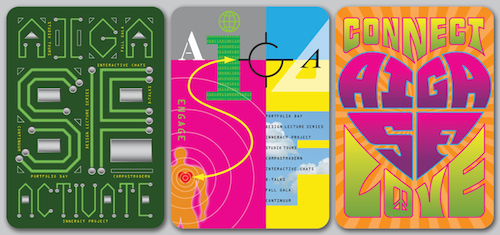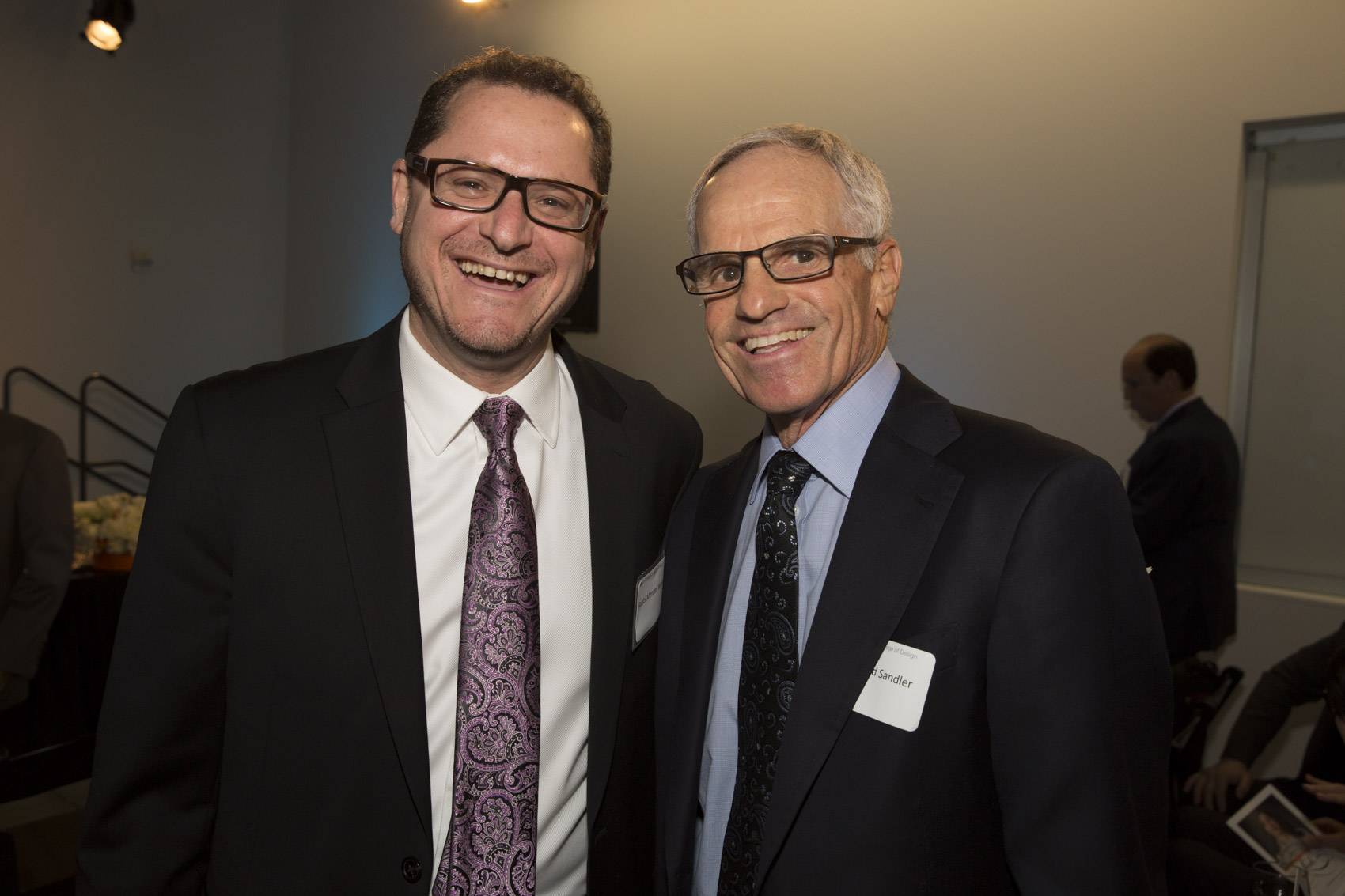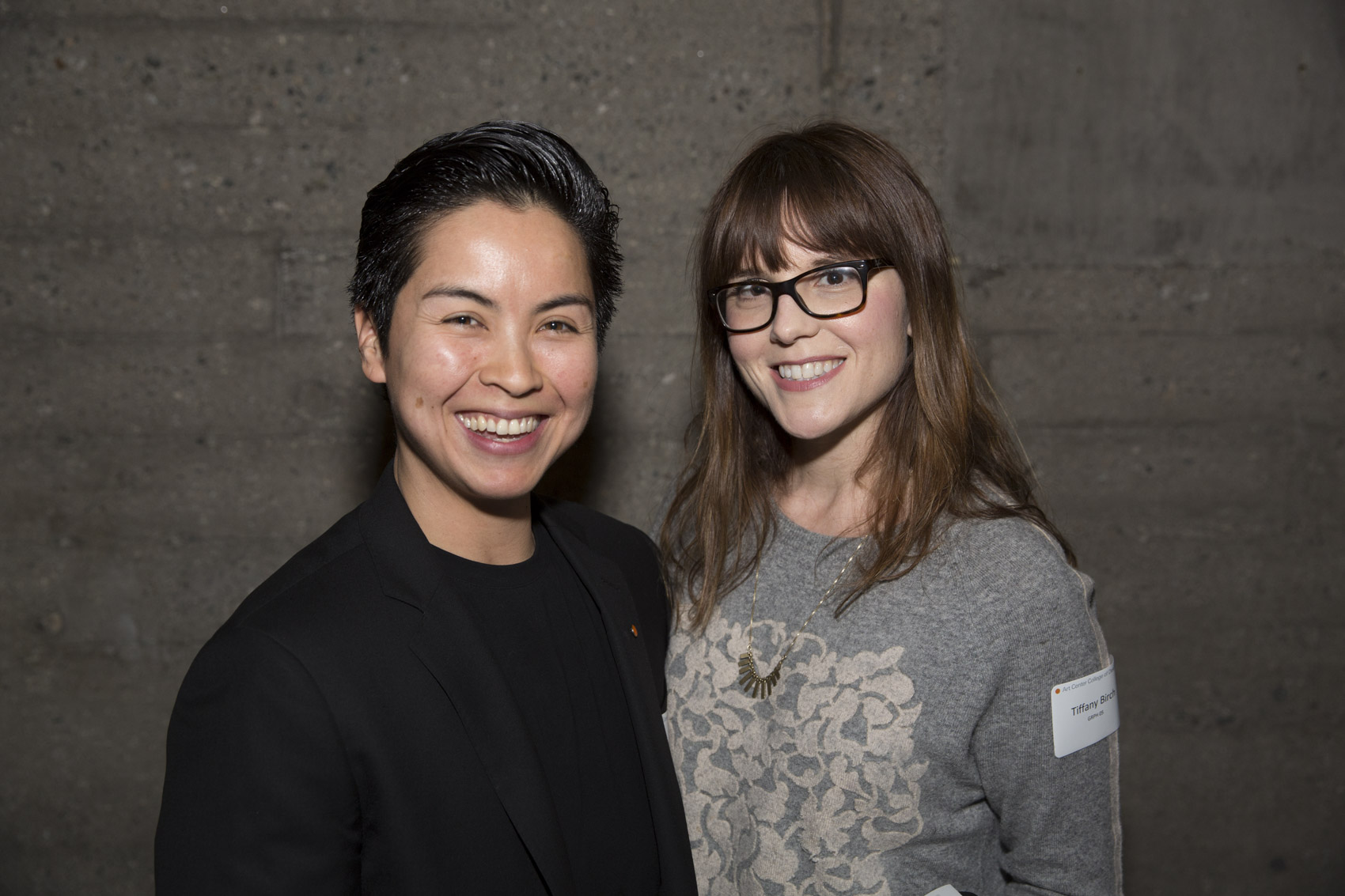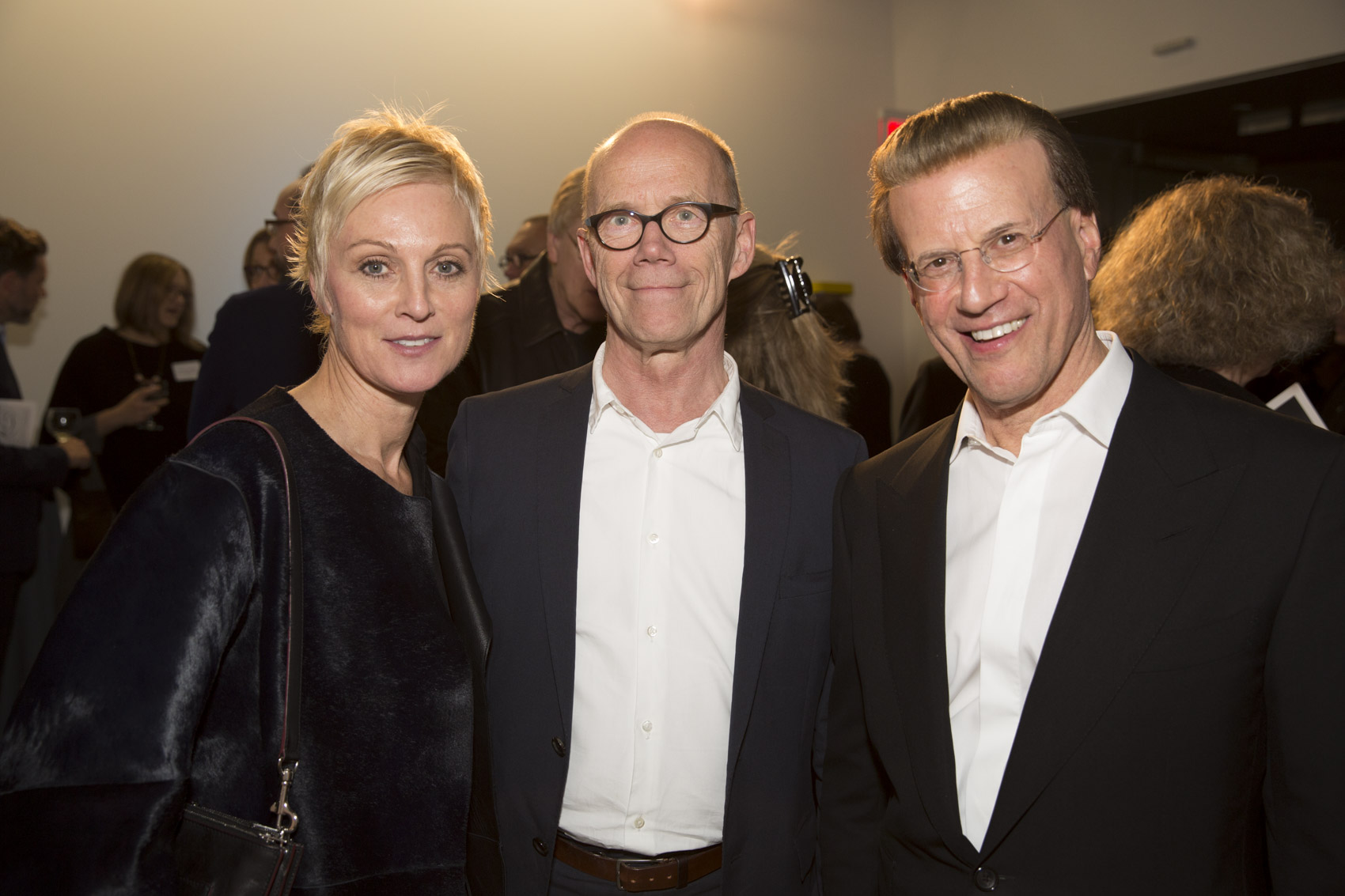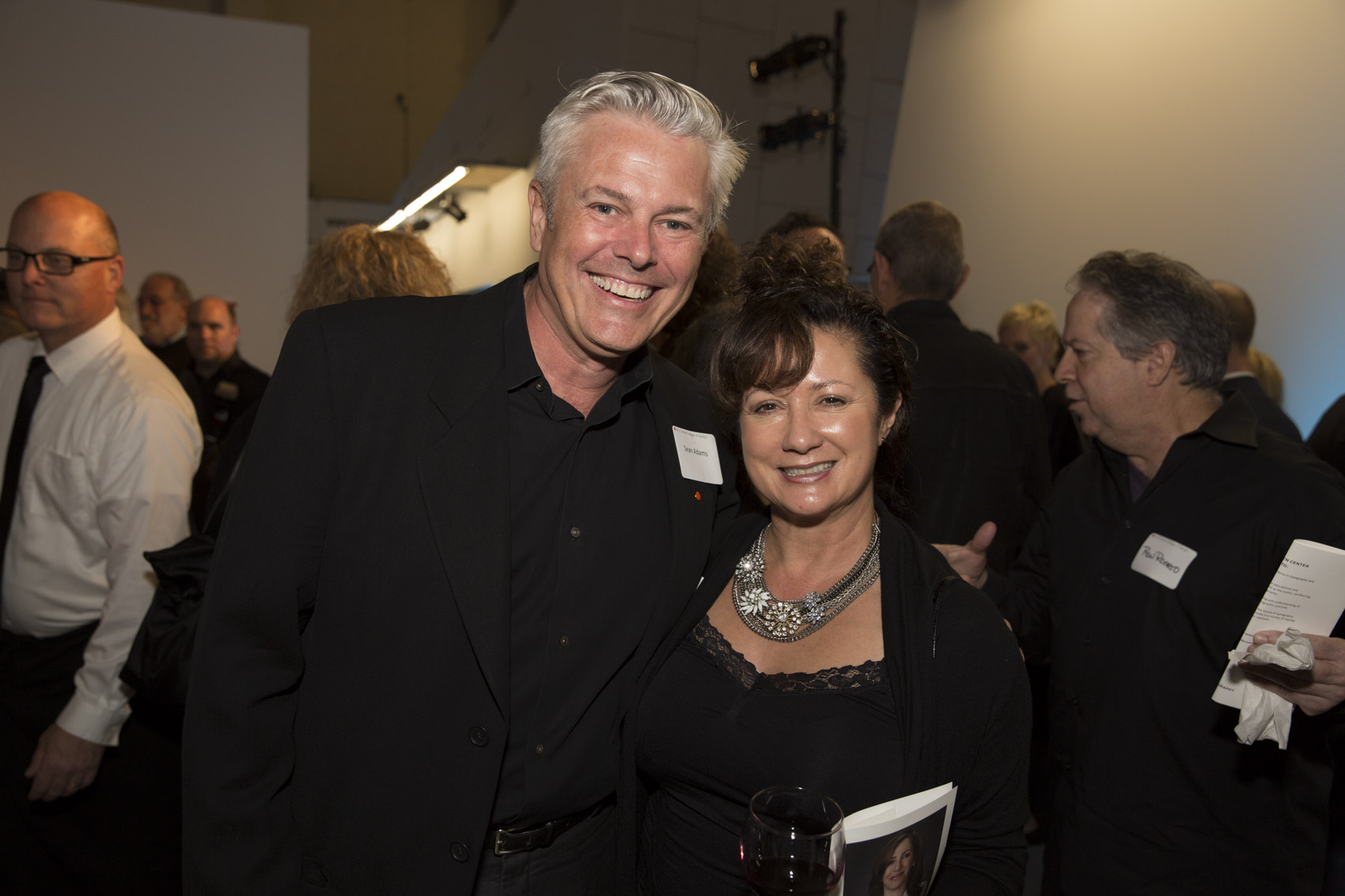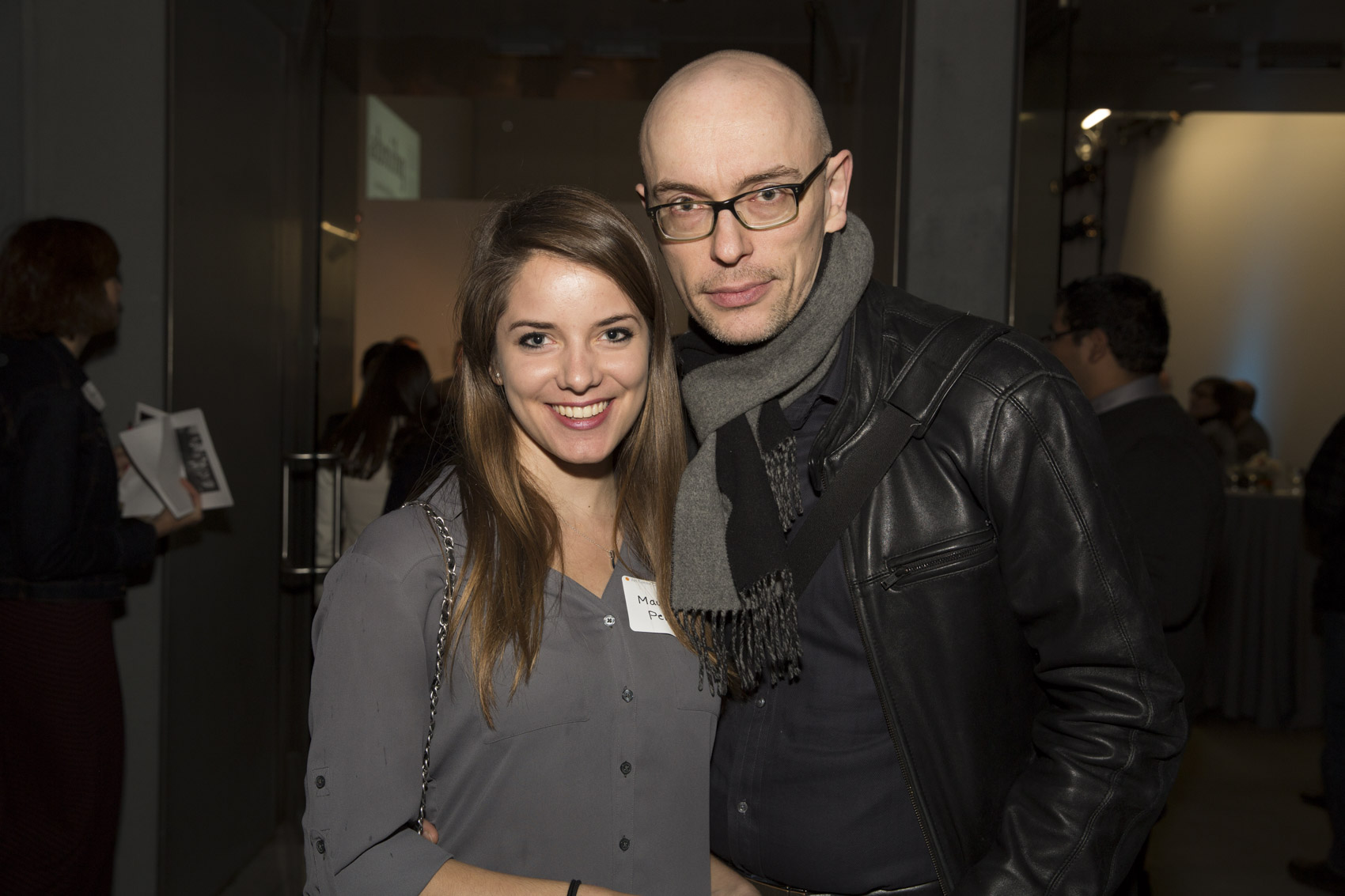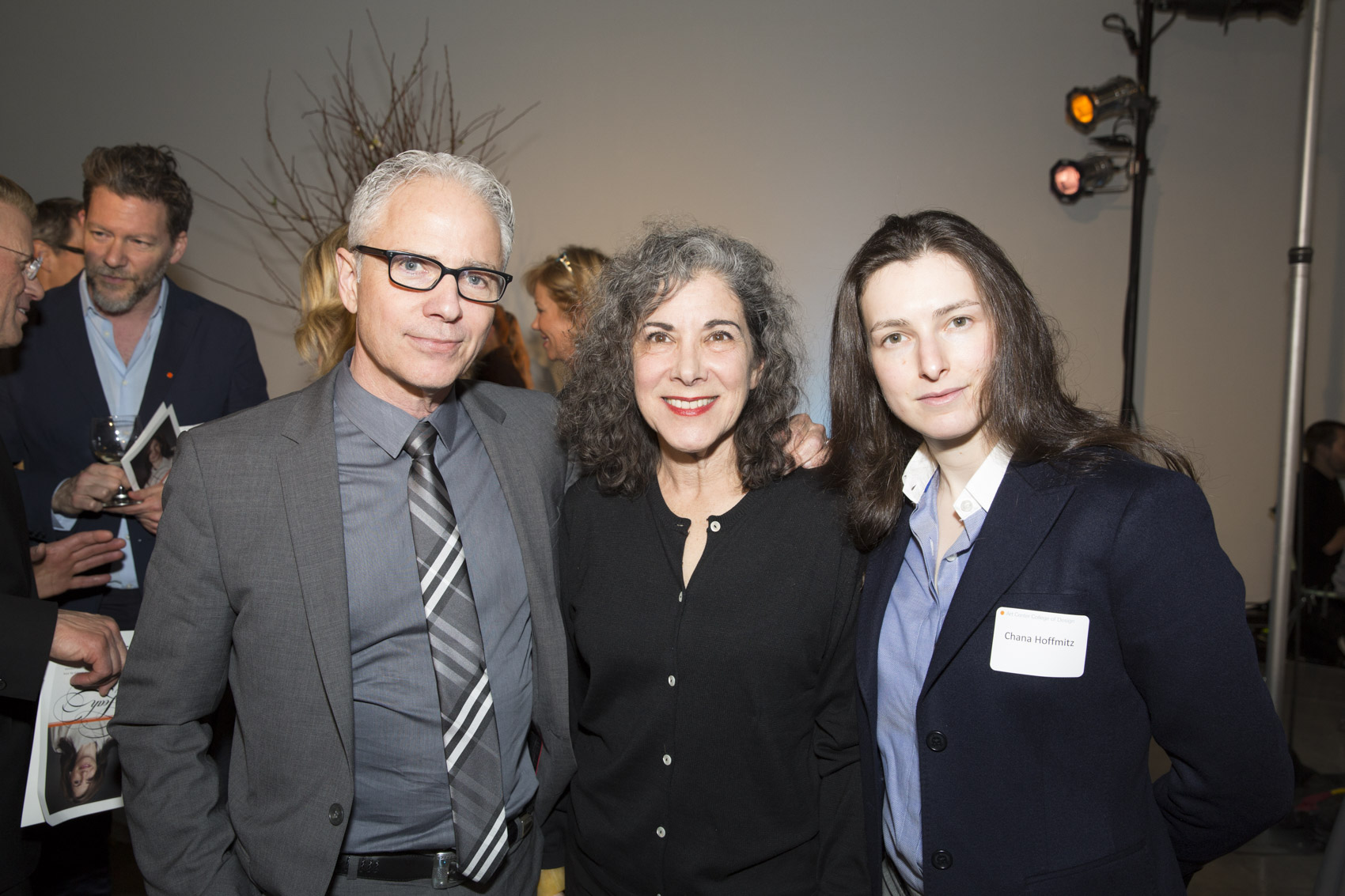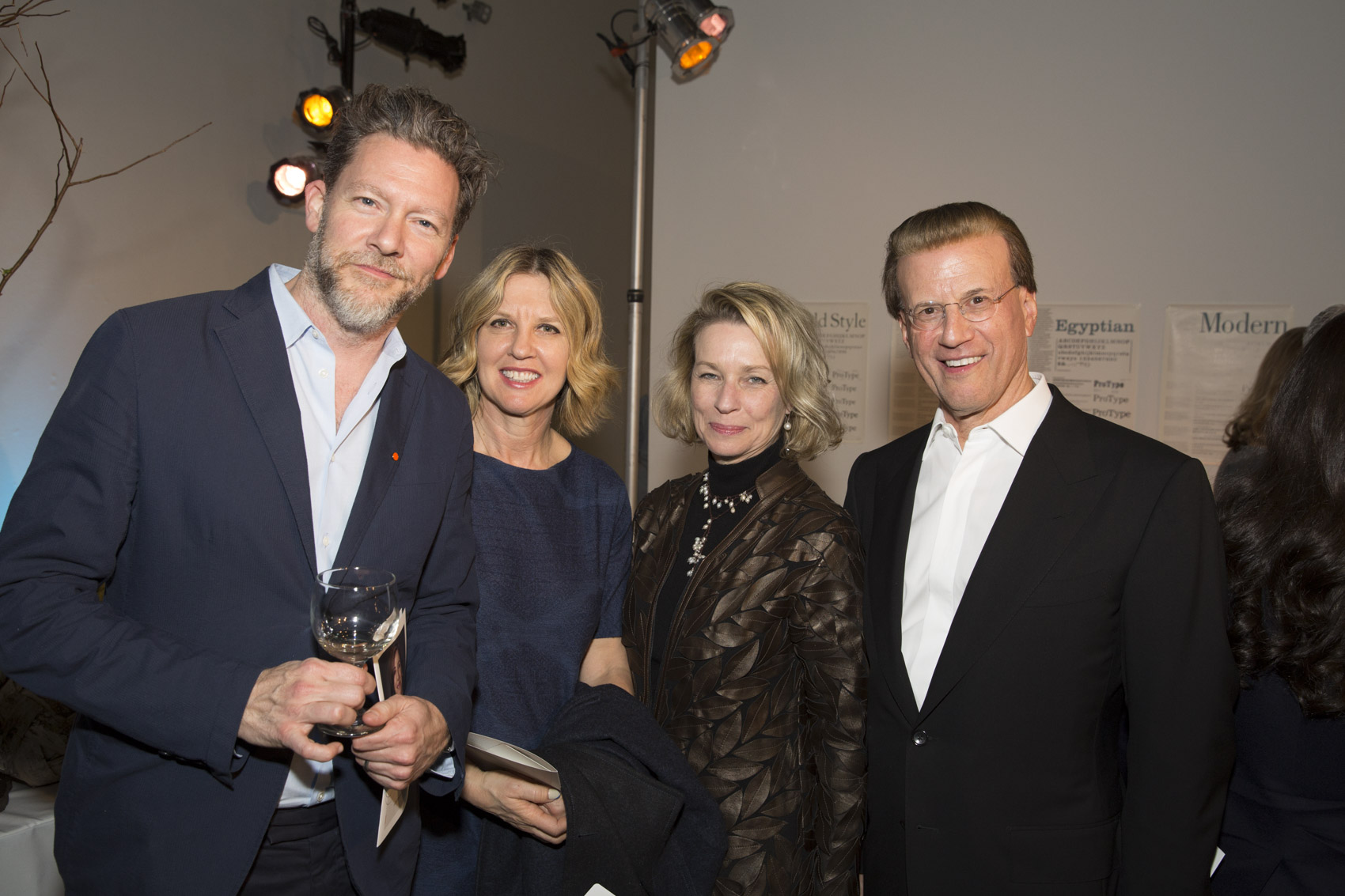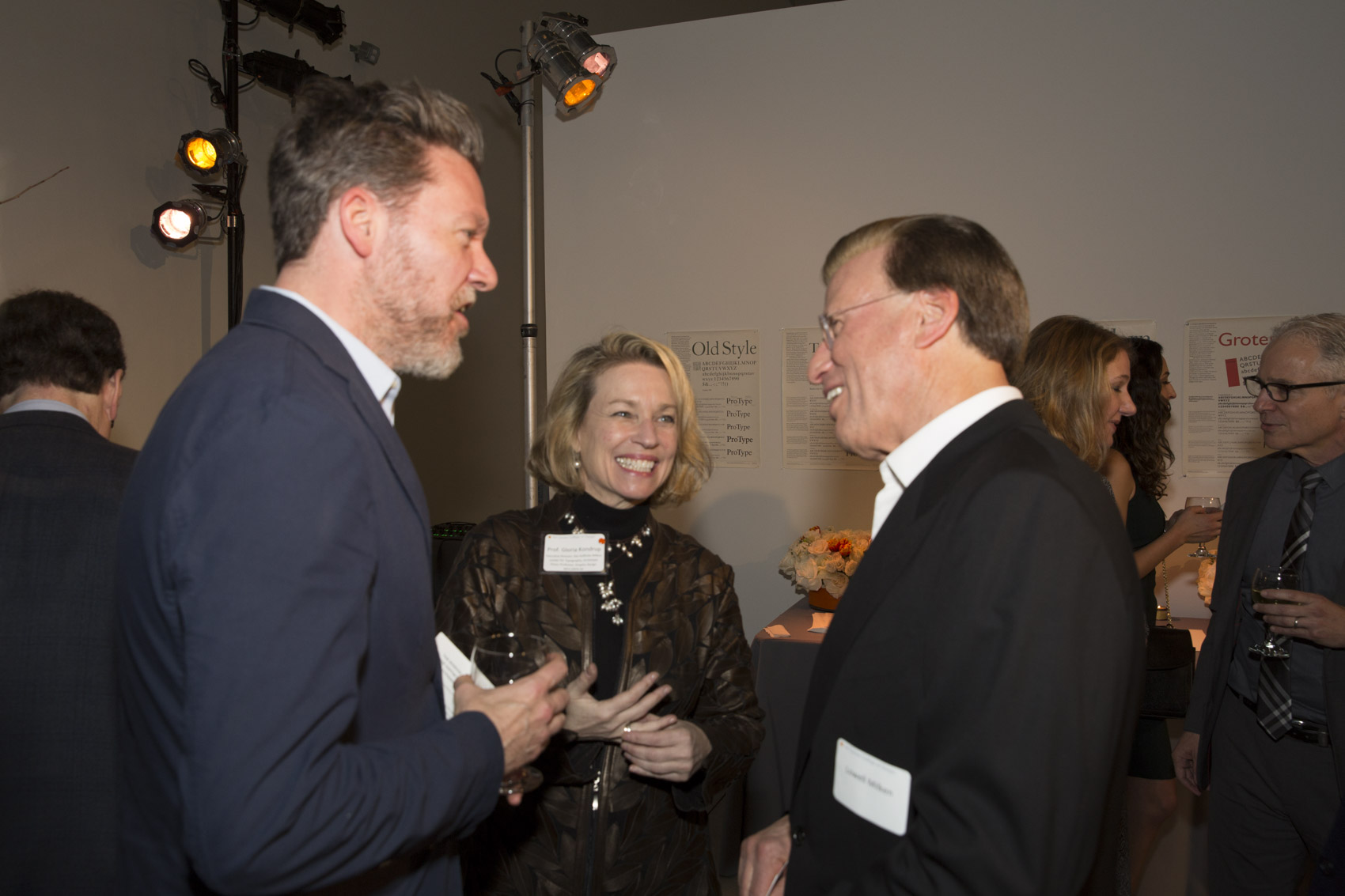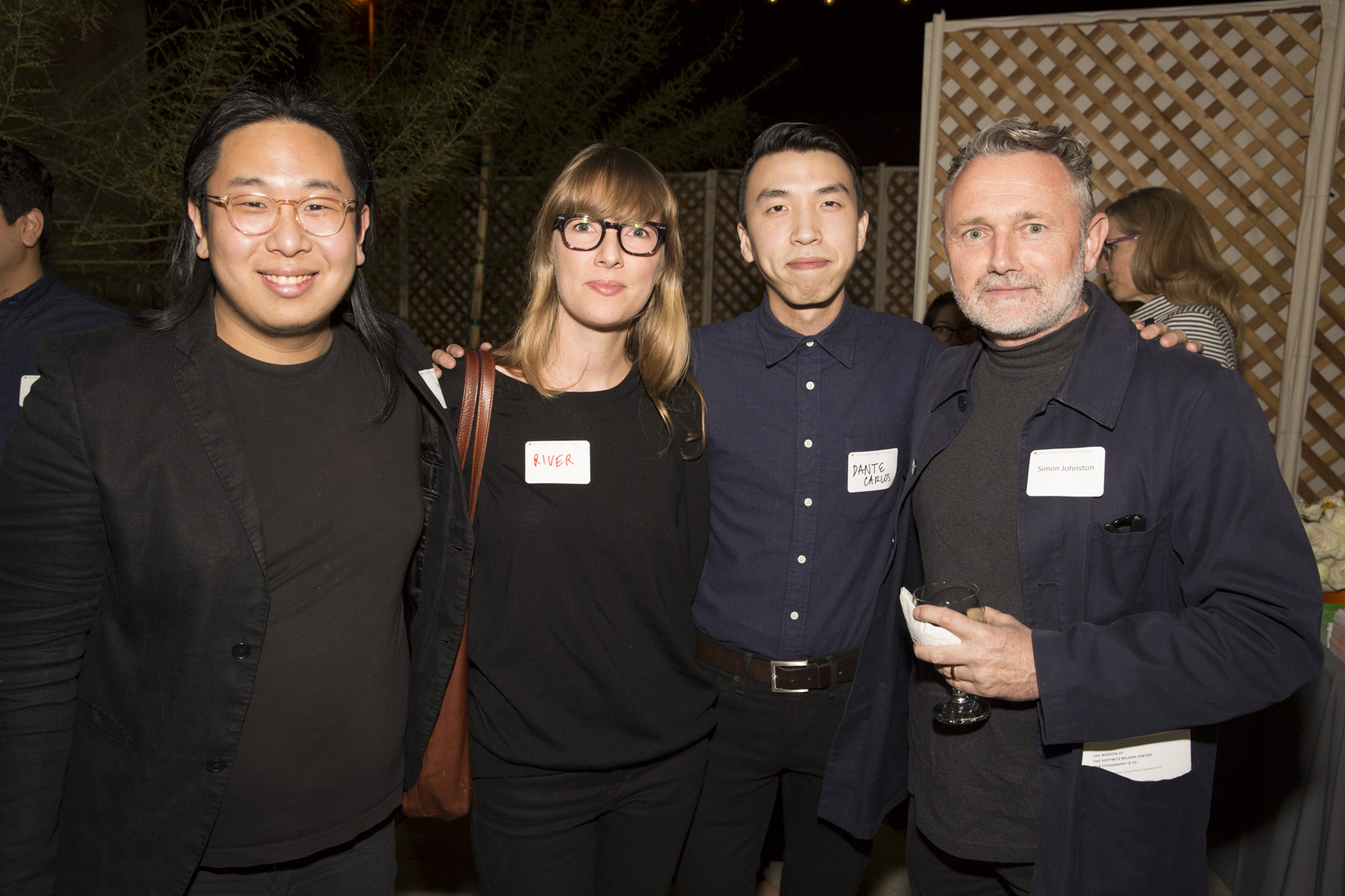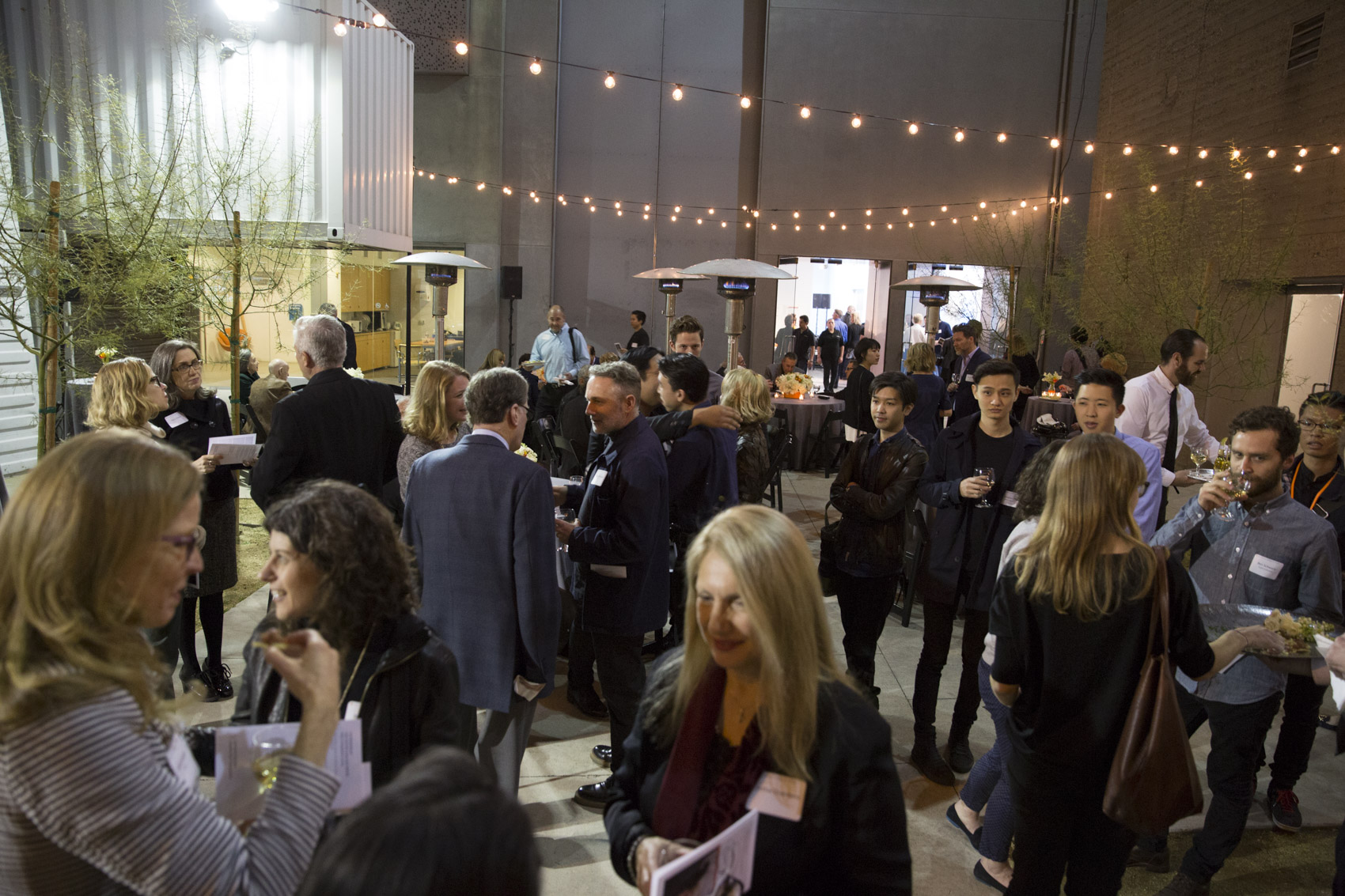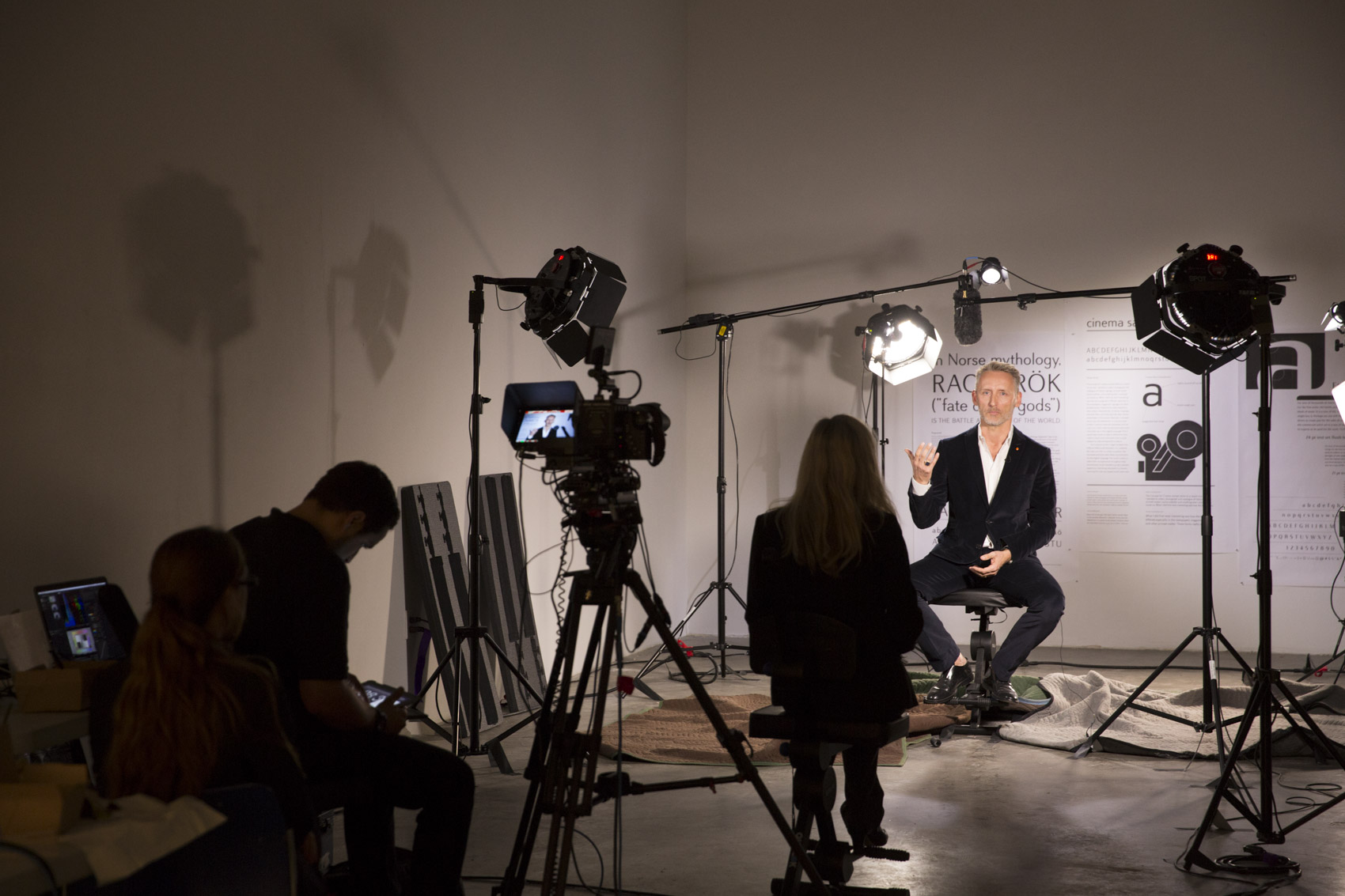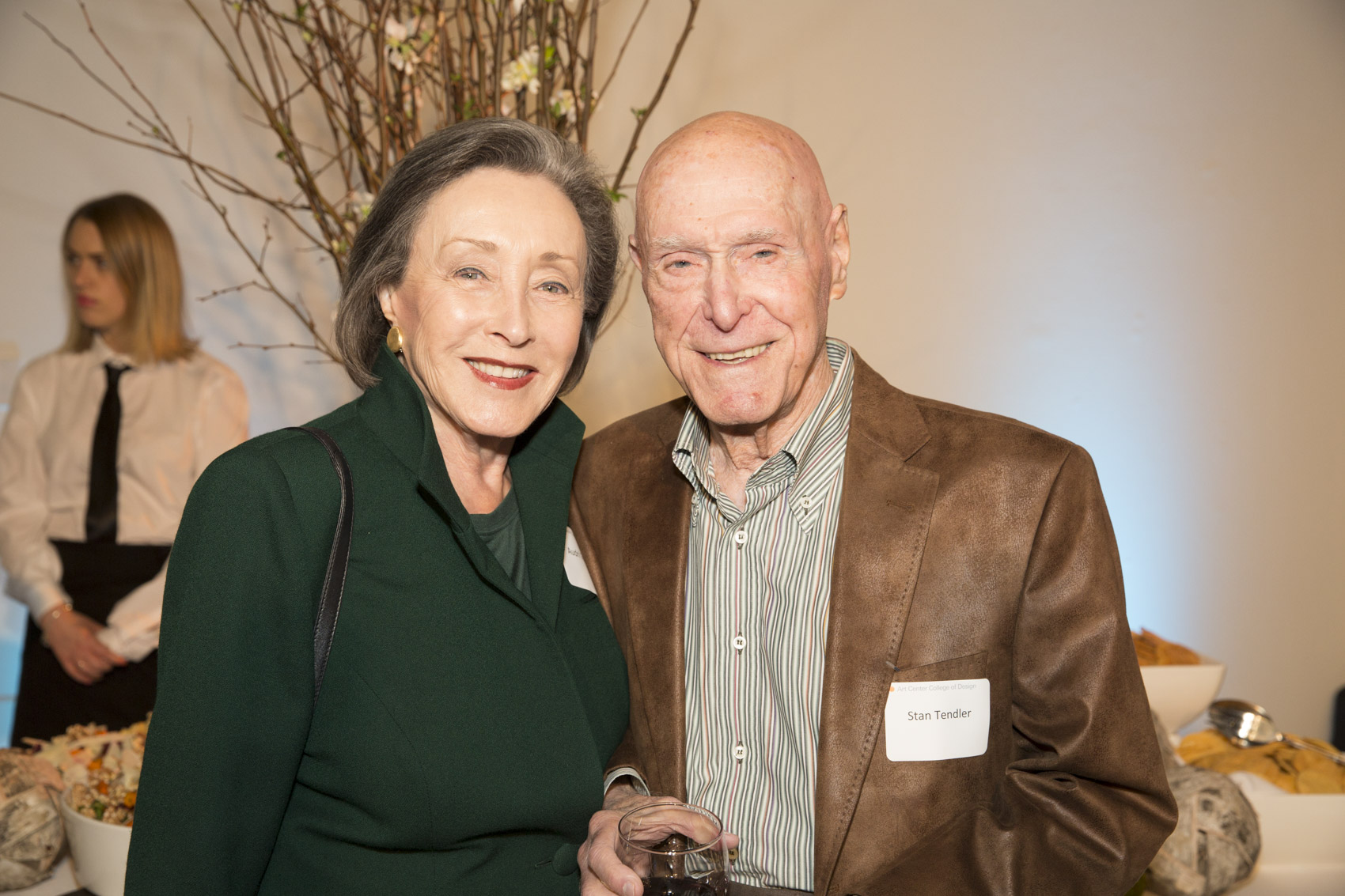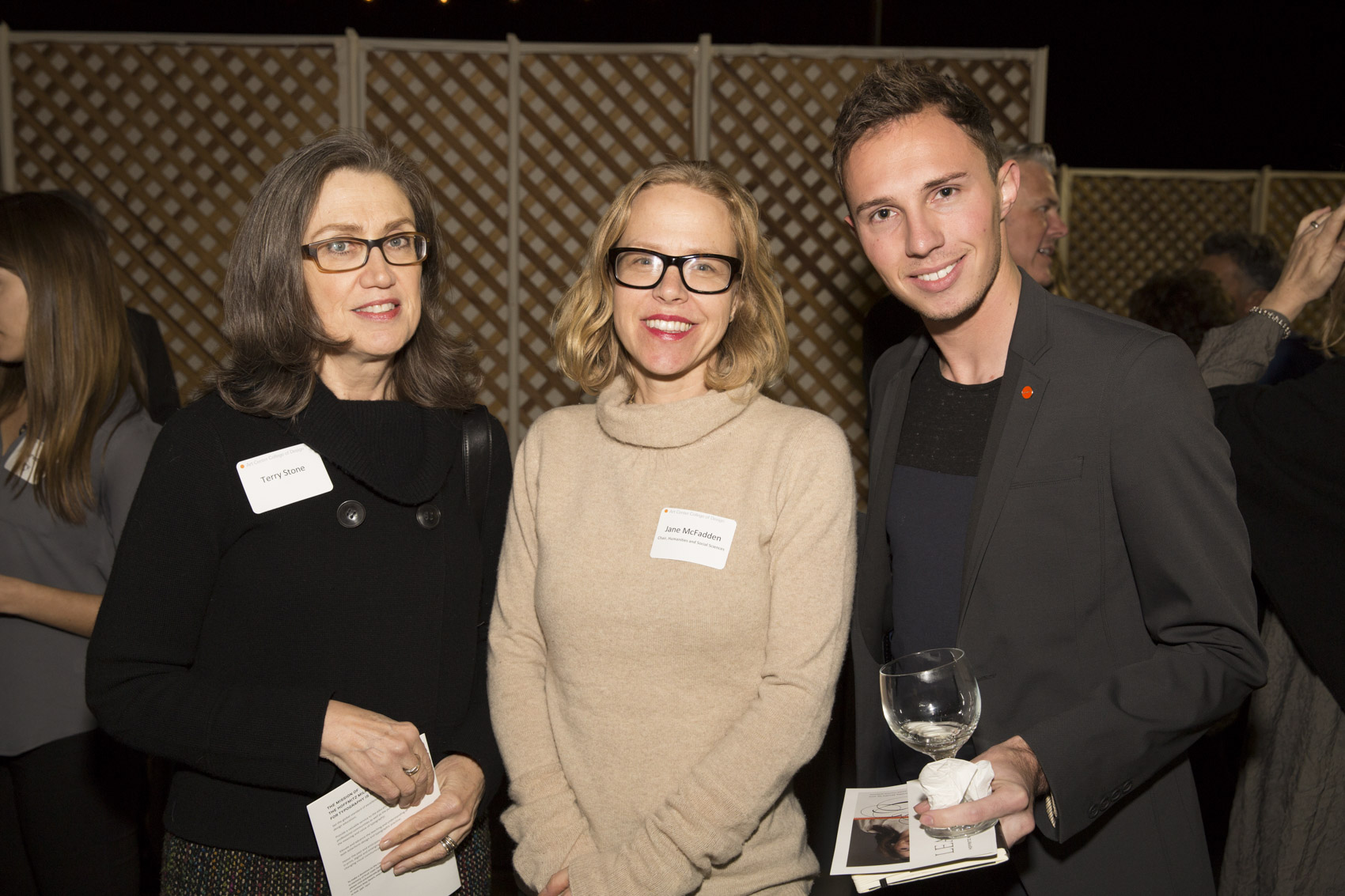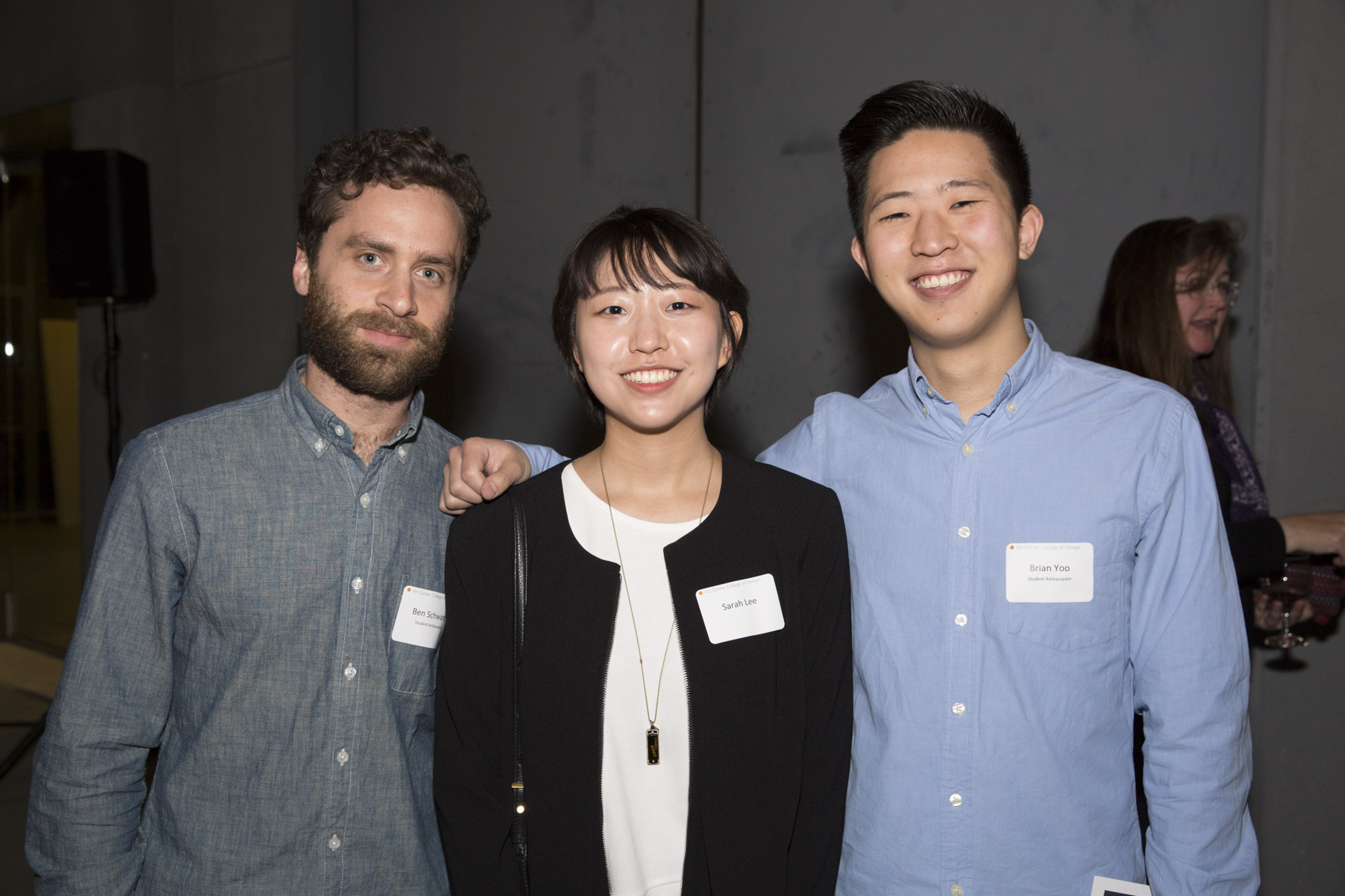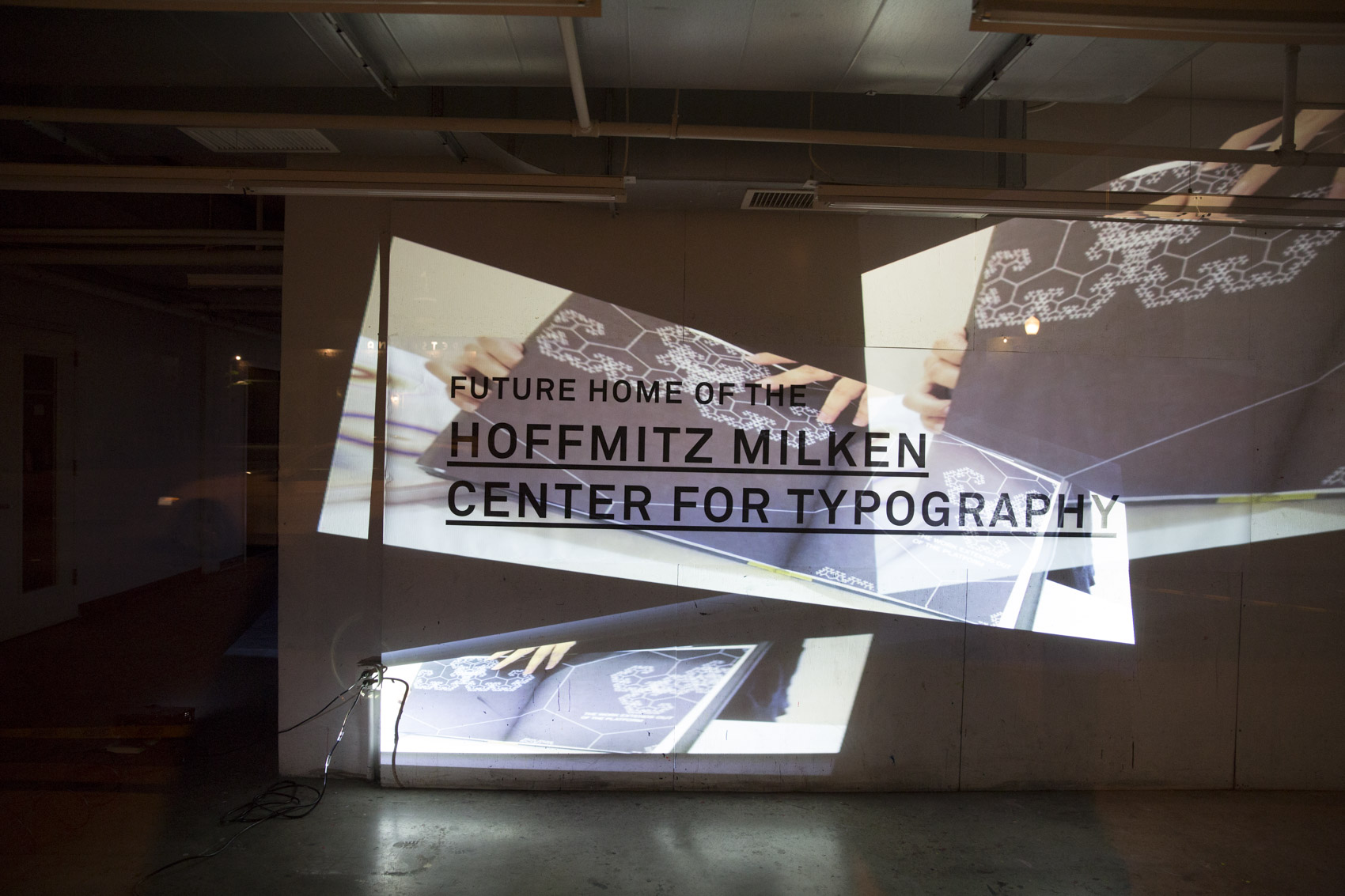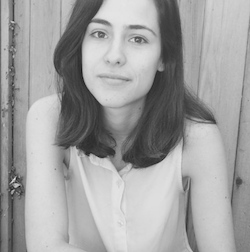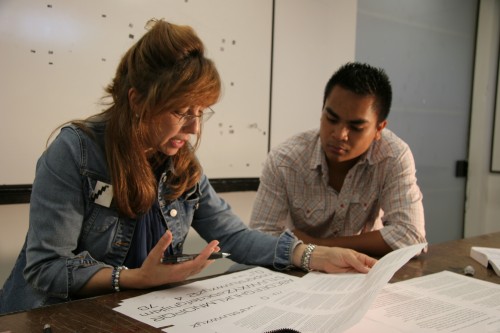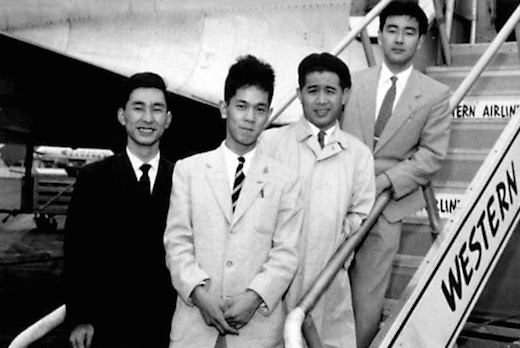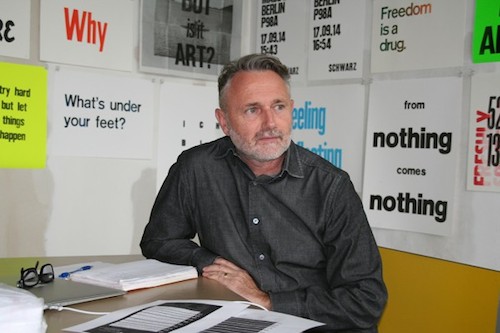
Julian Smith, Hayden Smith, Chris Lundy and Mark Smith worked together as the “Sarasota Brotherhood” to gather and ship the paintings for the exhibition.
It’s no surprise that lifelong friendships are often forged out of the rigor and intensity of an Art Center education. Take Mark Smith (BFA 88 Graphic) and Chris Lundy (BFA 89 Illustration), who met at Art Center in 1985. What’s followed has been 30 years of artistic collaborations, a shared love of music, film and writing and surf days on the beach. When Chris was diagnosed this past September with glioblastoma multiforme, a cancerous tumor of the brain, the two friends met the challenge side by side. Inspired by each other and their shared Art Center experience, they decided to create a scholarship in Chris’s name.
On Saturday, July 18, an exhibition spearheaded by Mark will showcase Chris’s extraordinary paintings, with proceeds going to support the Chris Lundy Creative Scholarship. The fund will provide financial assistance to talented Art Center students. Mark offered to talk to us about the exhibition, which will take place at the headquarters of Hurley in Costa Mesa, and his friendship with Chris. Here’s our conversation:

